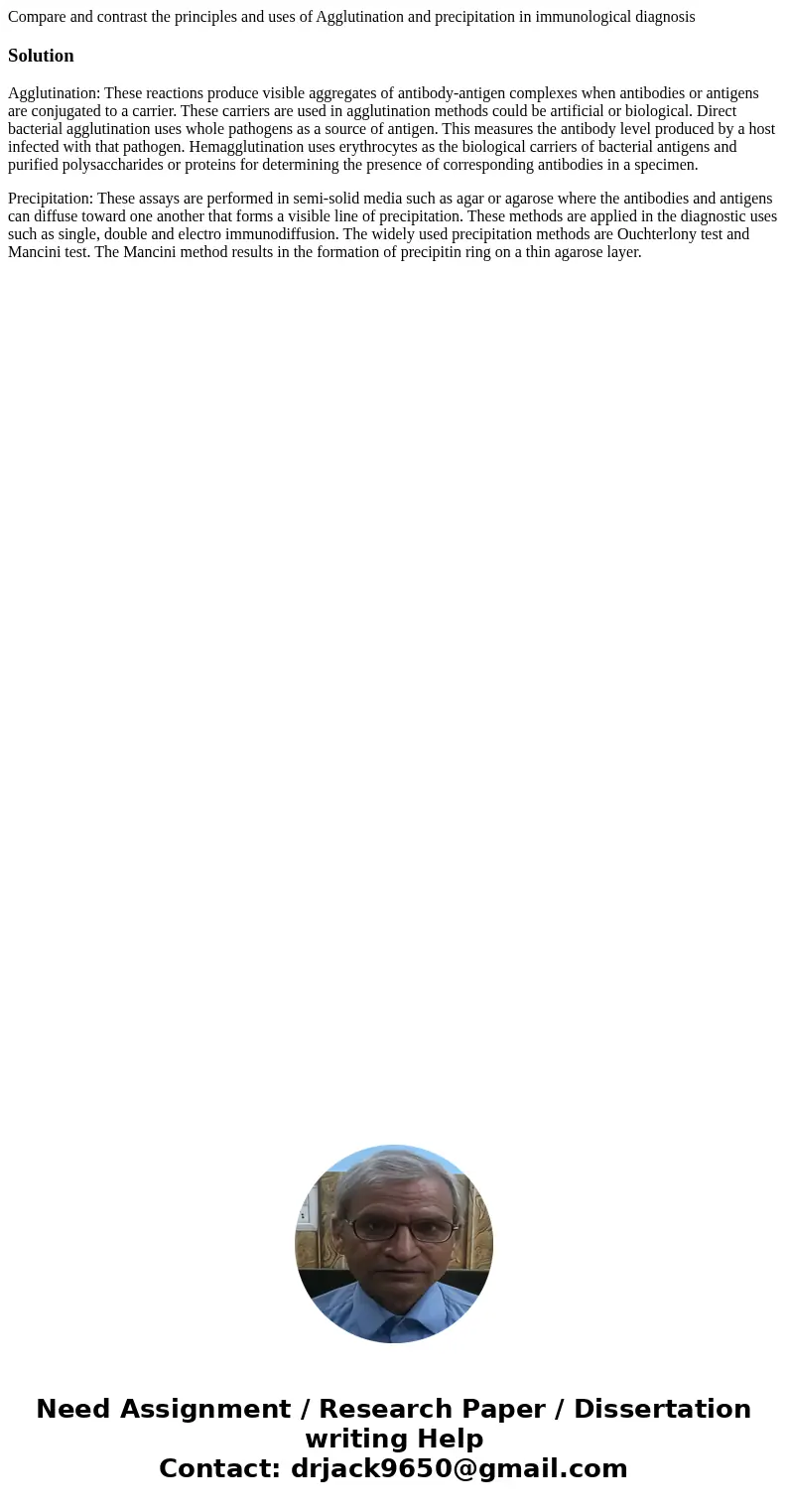Compare and contrast the principles and uses of Agglutinatio
Solution
Agglutination: These reactions produce visible aggregates of antibody-antigen complexes when antibodies or antigens are conjugated to a carrier. These carriers are used in agglutination methods could be artificial or biological. Direct bacterial agglutination uses whole pathogens as a source of antigen. This measures the antibody level produced by a host infected with that pathogen. Hemagglutination uses erythrocytes as the biological carriers of bacterial antigens and purified polysaccharides or proteins for determining the presence of corresponding antibodies in a specimen.
Precipitation: These assays are performed in semi-solid media such as agar or agarose where the antibodies and antigens can diffuse toward one another that forms a visible line of precipitation. These methods are applied in the diagnostic uses such as single, double and electro immunodiffusion. The widely used precipitation methods are Ouchterlony test and Mancini test. The Mancini method results in the formation of precipitin ring on a thin agarose layer.

 Homework Sourse
Homework Sourse